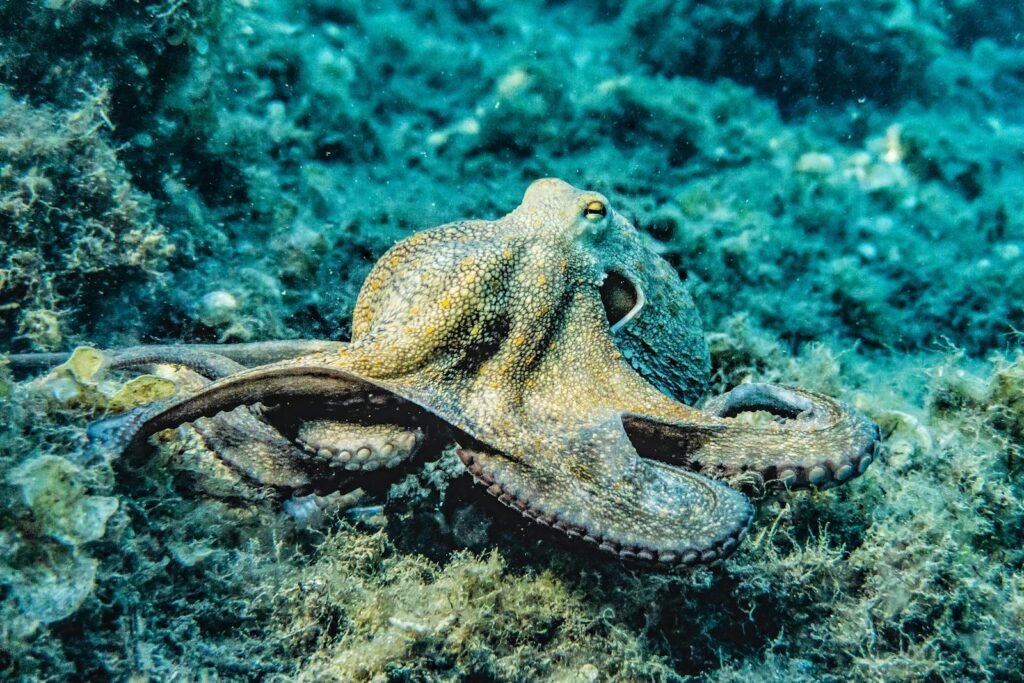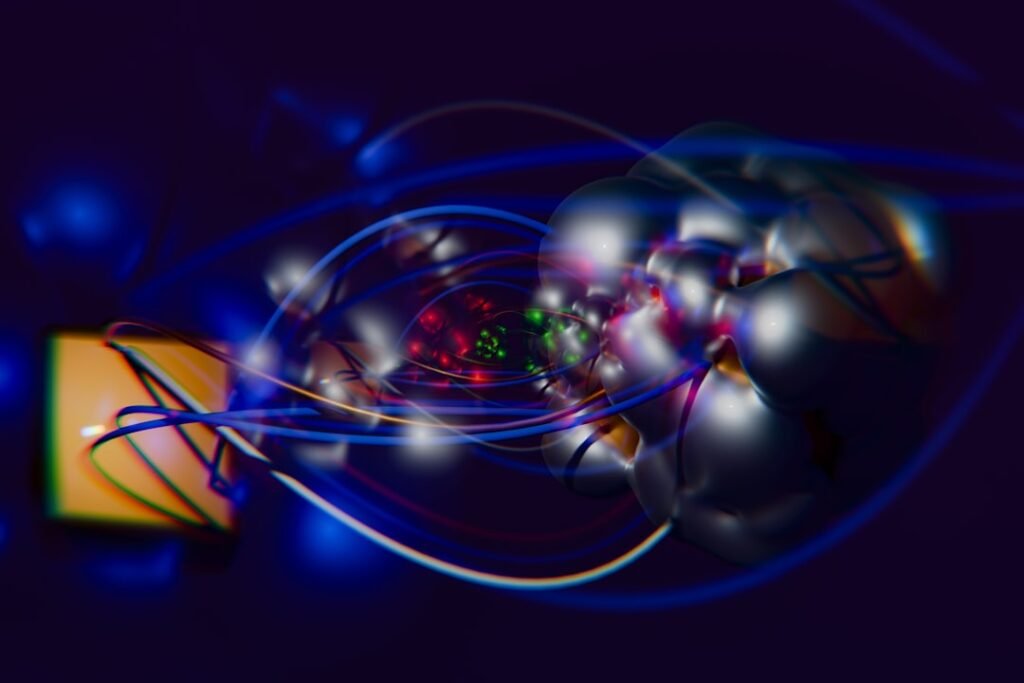Picture an octopus at rest, skin turned soft and pale – then, in a heartbeat, it flashes storm clouds of color across its body, eyes darting beneath closed lids, arms giving a quick shiver as if chasing something only it can see. For decades, that flicker of drama was dismissed as random twitching. Now, a wave of careful studies suggests something far more startling: cephalopods appear to cycle through a quiet sleep and an active, REM-like phase. The pattern echoes a nightly rhythm we thought was mostly reserved for birds and mammals. It hints that complex sleep might have evolved more than once on Earth, in bodies built utterly differently from ours. And it opens a fresh chapter in the mystery of animal minds, written in ink made of memories.
The Hidden Clues

When octopuses drift into their deepest rest, their bodies settle, pupils narrow, and the wild kaleidoscope of skin patterns fades. Then comes the jolt: a brief, recurring episode where their skin ripples through the same patterns they use while hunting, hiding, or signaling during the day. These active bouts are short – typically around 40-45 seconds – but they return in regular cycles that resemble the cadence of REM sleep in vertebrates. Observers see rapid eye movement, muscle twitches, and skin motifs that look like fragments of the octopus’s waking life. The resemblance is not perfect, and no one claims these animals are dreaming the way we do, but the behavioral signatures line up in ways that are hard to ignore. That simple, striking sequence – stillness, burst, repeat – was the first clue that sleep in the sea has hidden chapters.
From Early Observations to Lab Breakthroughs

Early accounts came from divers and keepers who noticed that resting octopuses sometimes “acted out” patterns with no clear trigger, but those anecdotes needed controlled tests. Over the last few years, researchers have filmed animals through the night, tracked their eye movements, and mapped the choreography of their skin in frame-by-frame detail. Crucially, when octopuses are gently kept awake, they later show more – and more intense – active episodes, a rebound effect that suggests a biological need for this state. Teams have also recorded distinct brain-state signatures aligned with quiet versus active sleep, although the signals differ from mammalian EEG for obvious anatomical reasons. Taken together, the timing, the rebound after sleep loss, and the brain-behavior coupling moved the field beyond “odd behavior” into the realm of sleep science. It’s the difference between a hunch and a dataset you can test, challenge, and repeat.
Inside the Sleeper’s Skin

Unlike us, octopuses wear their nervous system on their sleeve – literally, because their skin is an expressive canvas run by brain and arm-based circuits. During active sleep, chromatophores open and close in crisp sequences, revealing patterns used in daily life: mottled camouflage, bold warning banners, even the zebra-like striping tied to high-alert behavior. Some scientists suggest these are fragments of memory being replayed or rehearsed, the way a musician might unconsciously practice scales during a daydream. Others see a process of neural housekeeping, where circuits fire in familiar combinations to stabilize learning. The truth may be both, or something we haven’t named yet, but the skin gives us a window that mammals can’t: you can literally watch the brain’s nightly work scroll across an octopus’s body. It’s like seeing the subtitles for a movie the animal is experiencing internally.
Brains Without a Backbone

Cephalopods are the poster children for independent intelligence: no bones, three hearts, blue blood, and a brain plan that would puzzle an engineer from another planet. Roughly two thirds of their neurons live in the arms, which can perform reflexive problem-solving while the central brain handles strategy. That distributed architecture means their sleep cannot be a carbon copy of ours – yet the presence of two distinct states, including a REM-like one, hints at convergent solutions to the demands of learning. If you build a flexible mind, you may need offline time to store and reorganize experience, whether you’re a cuttlefish blending into coral or a person blending into city crowds. Recent work also points to specific brain regions in cephalopods that change activity across sleep states, paralleling functional divisions we see in vertebrates. Different bodies, similar needs: that’s the thread pulling this story together.
Global Perspectives

What makes the case convincing is how consistent the pattern looks across species and labs. Observations come from common octopuses and their island cousins, from cuttlefish famous for camouflage, and from squid with social light shows, pointing to a family-wide phenomenon. The active episodes vary in exact timing and intensity, but the alternation of quiet and REM-like states keeps reappearing, like a chorus across oceans. Field-adjacent setups that simulate natural light and current patterns show similar sleep cycles to those recorded in classic lab tanks, suggesting these are not artifacts of captivity. As more teams share standardized methods and open datasets, the comparison gets sharper and the picture clearer. The upshot: this is not a one-off curiosity; it’s a robust behavioral architecture woven through cephalopod life.
Why It Matters

Sleep is one of biology’s universal riddles, and REM-like sleep is the twist that makes the puzzle irresistible. In mammals and birds, it has been tied to memory consolidation, emotional processing, and synaptic fine-tuning; seeing a similar state in cephalopods challenges the idea that REM is a vertebrate specialty. If complex sleep evolved at least twice, the function it serves may be fundamental to any brain that learns quickly and flexibly. That perspective reframes how we compare nervous systems and how we search for general rules of cognition. It also has practical implications: cephalopod welfare standards, enrichment routines, and research protocols may need to respect their sleep cycles to avoid muddying results. In a wider sense, the finding nudges neuroscience to study principles, not just parts, focusing on what brains – of any blueprint – must do to thrive.
The Future Landscape

New tools are poised to push this story forward, from noninvasive imaging that can track activity through soft tissue to machine learning that parses skin pattern sequences like musical scores. Expect tighter links between behavior and memory tests, where octopuses learn a task by day and are monitored at night for replay-like motifs. Miniature tags, improved low-light cameras, and smarter algorithms will also bring the field closer to natural settings, where currents, predators, and social cues shape real sleep. Genetics in cephalopods is advancing cautiously, opening doors to map circuit-level changes across states without invasive disruption. Technical hurdles remain – soft bodies make stable recordings tricky, and each species has its own sleep geometry – but the pace is quickening. The payoff could be a comparative theory of sleep that stretches from reefs to bedrooms.
How You Can Help

Curiosity is fuel, and there are simple ways to turn it into progress for ocean minds. Seek out aquariums and science centers that publish their animal care standards and highlight research collaborations, because transparent institutions tend to adopt better sleep-friendly routines. Support organizations that preserve coastal habitats where wild cephalopods hunt, breed, and – yes – sleep, since healthy ecosystems give researchers a truer baseline to compare with lab results. If seafood is part of your life, look for certifications that track species and methods with lower ecological impact, reducing pressure on populations that are key to ongoing studies. Share responsible science reporting with friends and young learners; accurate stories change how people vote, donate, and explore. Above all, keep asking bold questions about animal minds, because good questions are the tide that lifts better science.

Suhail Ahmed is a passionate digital professional and nature enthusiast with over 8 years of experience in content strategy, SEO, web development, and digital operations. Alongside his freelance journey, Suhail actively contributes to nature and wildlife platforms like Discover Wildlife, where he channels his curiosity for the planet into engaging, educational storytelling.
With a strong background in managing digital ecosystems — from ecommerce stores and WordPress websites to social media and automation — Suhail merges technical precision with creative insight. His content reflects a rare balance: SEO-friendly yet deeply human, data-informed yet emotionally resonant.
Driven by a love for discovery and storytelling, Suhail believes in using digital platforms to amplify causes that matter — especially those protecting Earth’s biodiversity and inspiring sustainable living. Whether he’s managing online projects or crafting wildlife content, his goal remains the same: to inform, inspire, and leave a positive digital footprint.




